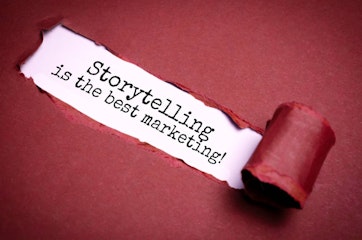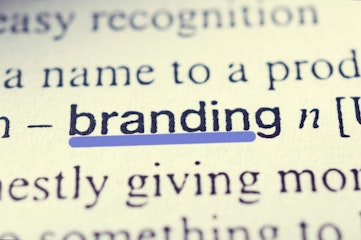Printed materials have long been a staple of marketing. Brochures, posters, flyers, banners - they work hard at trade shows, in shops, and on high streets. But once the event is over, or the campaign finishes, what then? Do they just get boxed up or recycled? That’s where repurposing comes in.
Repurposing printed marketing materials for digital use extends their lifespan, reduces waste, and ensures that the time and effort put into creating them continues to generate results. It’s not just practical - it’s strategic.
Why Repurpose at All?
Designing and producing printed collateral isn’t cheap. From professional photography to high-quality printing, a lot of investment goes into creating these materials. Repurposing maximises that investment by adapting content for new platforms.
It also reinforces consistency. If someone saw your brochure at an exhibition and later spots the same message in a social media post, it builds recognition and trust. Familiarity matters.
And then there’s sustainability. Using materials across multiple formats reduces the need for constant redesigns and reprints, making your marketing more eco-friendly.
Step 1: Audit What You Already Have
Before diving into repurposing, take stock of your printed materials. Look for:
Core messages: Are they still relevant?
Visuals: Do the graphics, charts, or photos translate well to screen?
Formats: Flyers, brochures, case studies - all can be adapted differently.
The aim is to identify which pieces have the strongest potential for digital transformation.
Step 2: Adapt Content for Online Platforms
Printed text is usually more detailed than what works online. Digital audiences skim, so you’ll often need to edit and reframe content.
From brochure to blog: Break down long-form descriptions into bite-sized blog posts.
From flyer to social media: Use snappy headlines or statistics as standalone graphics.
From poster to email banner: Reuse bold visuals for digital campaigns.
The core information stays the same, but the presentation adapts to match how people consume content online.
Step 3: Reuse Visual Assets
Good photography, illustrations, and infographics shouldn’t be confined to paper. With minimal tweaking, they can be shared across websites, LinkedIn posts, or even as part of a downloadable guide.
Keep in mind digital specifications - high-resolution images for web, compressed versions for social media, and accessibility considerations like alt text.
Step 4: Extend Event Impact

Exhibition stands and event banners often contain strong messaging, brand visuals, and key product highlights. These can all feed into digital campaigns after the event ends.
Photos of your displays, for example, can be shared on social media with captions that recap highlights. This ties directly into repurposing printed materials into post-event content. It not only showcases your brand’s physical presence but also extends visibility to those who couldn’t attend in person.
Step 5: Blend Print With Interactive Elements
One way to bridge the gap between print and digital is by making collateral interactive. A brochure design can be converted into a flipbook for your website. Posters can be adapted into short animated videos. Even a stand design - like the right stand for your exhibition setup - can be transformed into a case study video that demonstrates how your brand presents itself at live events.
The principle is simple: take what works in print and enhance it with the possibilities of digital.
Step 6: Don’t Forget SEO
Repurposed content also gives you opportunities to boost search visibility. Turning a printed guide into a blog, for instance, allows you to optimise with relevant keywords. Charts and graphics can be repurposed as infographics, which are highly shareable and great for backlinks.
This way, collateral doesn’t just continue working - it actively drives new digital traffic.
Common Pitfalls to Avoid
Repurposing isn’t a straight copy-and-paste job. A few mistakes to watch out for:
Not tailoring for the platform: A dense brochure PDF dumped online without adaptation is unlikely to engage anyone.
Ignoring design differences: Colours, fonts, and layouts may need adjustment for readability on screens.
Out-of-date messaging: Old offers or outdated stats need refreshing before reuse.
The goal is transformation, not duplication.
Measuring the Value
Repurposed content should be measured just like any other digital marketing effort. Use analytics to see which adapted assets drive engagement, whether that’s clicks, downloads, or conversions. This not only shows ROI but also guides future repurposing decisions.
Why This Approach Works
Customers don’t think in silos. They move fluidly between physical and digital experiences. A flyer they pick up today might spark a web search tomorrow. An exhibition banner might later be remembered when they see a social post with the same design.
Repurposing ensures cohesion across these touchpoints. It shows customers a consistent, professional brand presence wherever they encounter you.
Final Thoughts
Printed materials don’t need to be one-use assets. By repurposing them for digital channels, you extend their impact, save resources, and create consistent messaging across platforms.
From brochures becoming blogs to banners becoming social posts, the possibilities are extensive. What matters most is tailoring the format to the platform, ensuring everything feels natural and engaging.
At Display Wizard, we know print and digital don’t compete - they complement. Whether you’re designing new collateral or looking to adapt existing pieces, the aim is always the same: keeping your brand visible, consistent, and memorable in every space customers encounter it.








